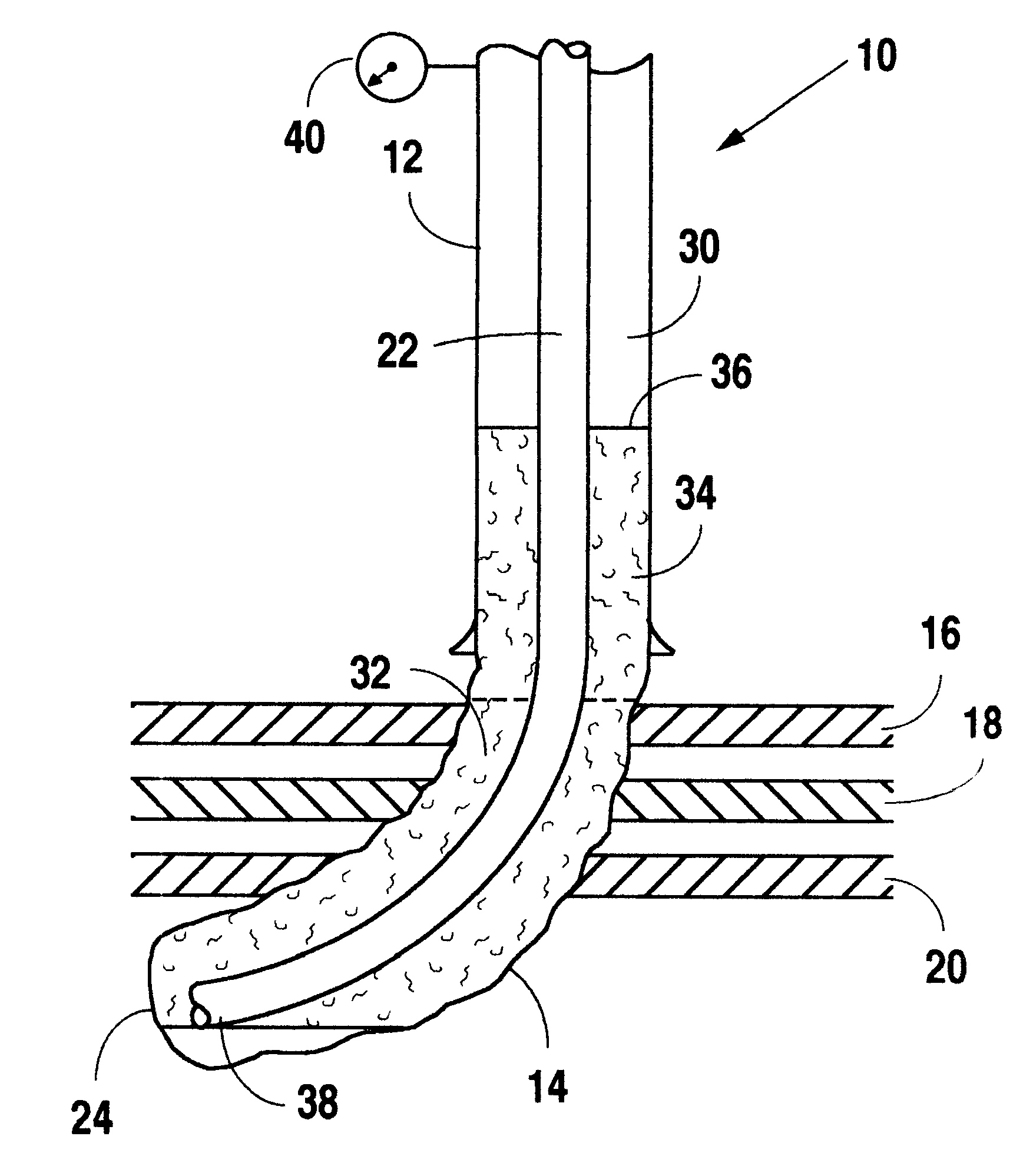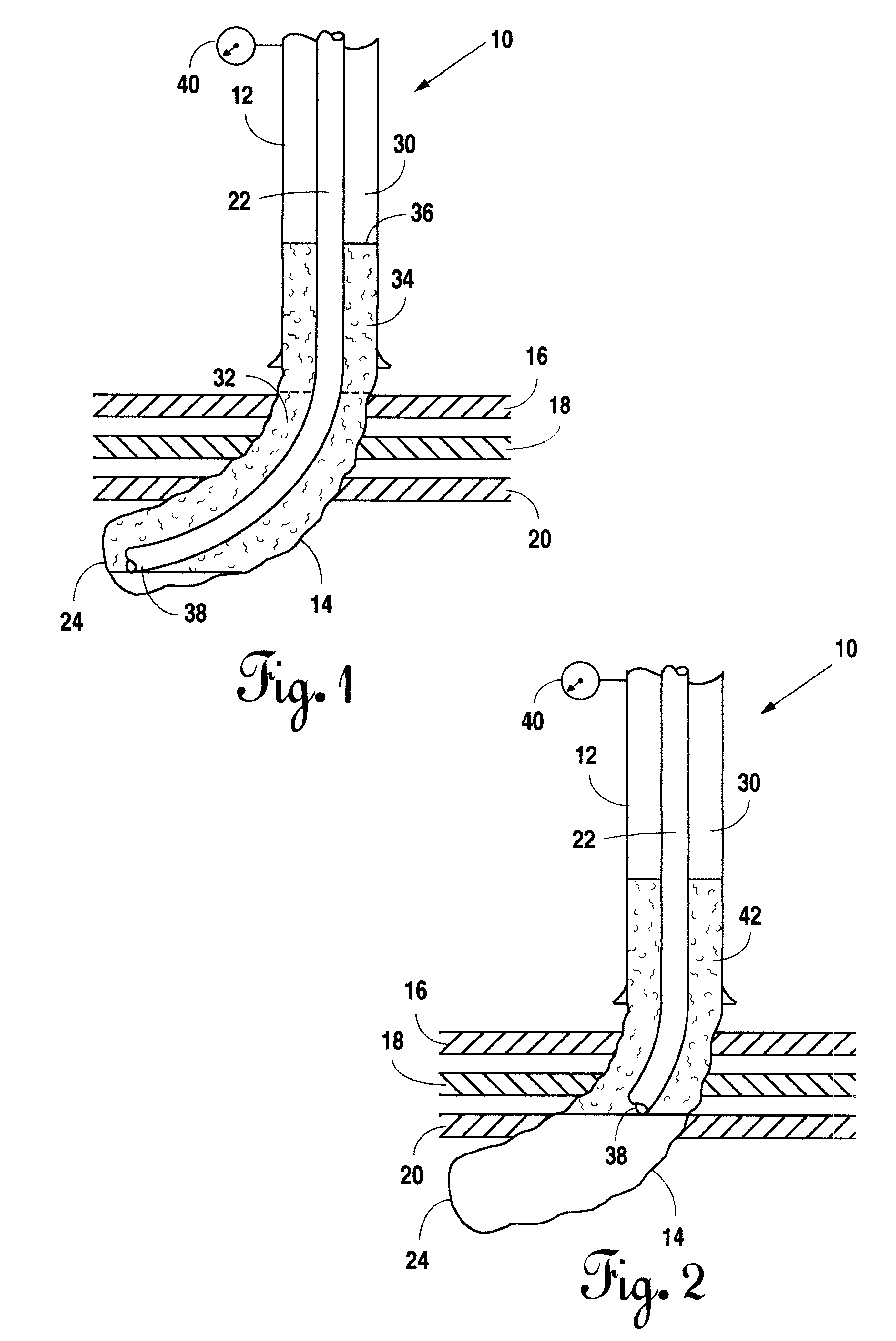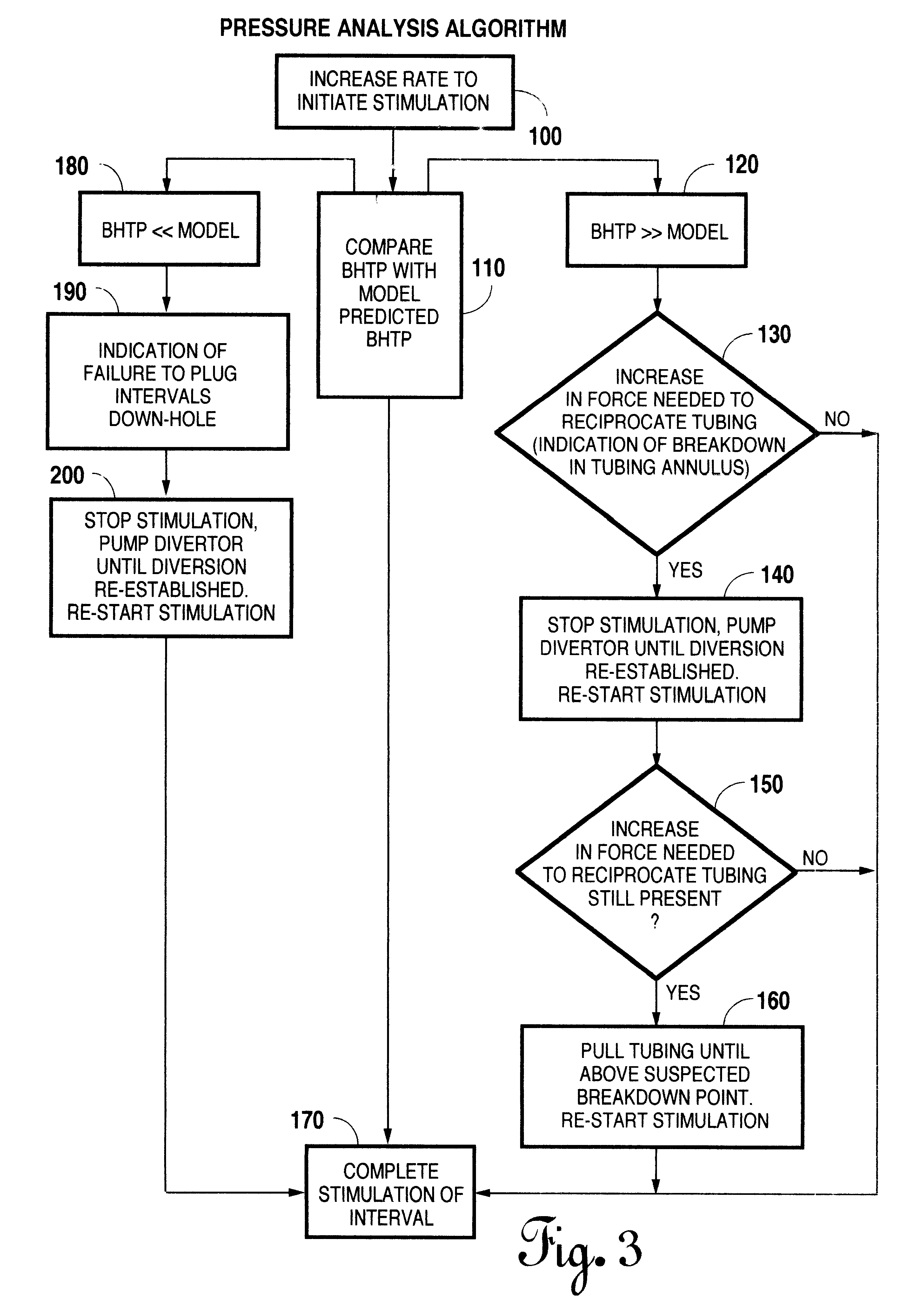Diversion treatment method
a well and treatment method technology, applied in the direction of drinking water installation, borehole/well accessories, survey, etc., can solve the problems of inability to accept injected fluids, relatively low injectivity, and high cost of mechanical diversion techniques, so as to facilitate real-time analysis of down hole pressure, the effect of greater control of fracture dimensions or matrix penetration
- Summary
- Abstract
- Description
- Claims
- Application Information
AI Technical Summary
Benefits of technology
Problems solved by technology
Method used
Image
Examples
example 1
A subject well having a horizontal completion in the Nelson porosity of the Upper Mission Canyon formation was evaluated for treatment according to the disclosed method. The completion was in a low porosity interval (0.4%-10.1% porosity) with the permeability less than 1.12 md. Production in this interval was desired from natural vertical fractures which had been indicated in core samples. Acid stimulation was selected as the most promising method for introducing high conductivity channels to connect with the natural fracture mechanism. BJ Services' 3-dimensional acid frac model ("MACID") was utilized to model the treatment. The primary design criteria was to create a high conductivity path via small radial fractures while avoiding a conductive path into an adjacent formation known as the Midale. Table 1 gives reservoir data for the test well. Table 2 gives well configuration (including tubular geometry) for the completion. Table 3 illustrates calculated fluid volumes for the comple...
example 2
Salt was mixed with fresh water to achieve the desired density necessary to create a diversion system having a neutral buoyancy. In this regard, 10 grams of Divert X was added to the salt to perform the test. 100 millimeters of water was chosen as the test volume so that a 100 milliliter glass cylinder could be used to observe the floating or sinking of the Divert X material. One gallon per 1,000 ("GPT") NE-18 nonemulsifier was added to reduce surface tension in the water. The tests were mixed and observed in the glass cylinders for 20 minutes duration. The dry Divert X material is about 22 millimeters of volume in a 100 millimeter cylinder. Table 5 represents the results of these tests.
TABLE 5 Specific Gravity of Divert X Floating, Divert X Sinking, Carrier Fluid Milliliters of Material Milliliters of Material 1,000 2 18 1.010 4 17 1.020 8 14 1.030 10 12 1,040 10 10 1.050 20 2 1.060 22 0
Based on the above, the Divert X material did not all float or sink, indicating that the density...
example 3
Table 7 lists components of an acid well treatment fluid and diversion pad for the disclosed method.
PUM
 Login to View More
Login to View More Abstract
Description
Claims
Application Information
 Login to View More
Login to View More - R&D
- Intellectual Property
- Life Sciences
- Materials
- Tech Scout
- Unparalleled Data Quality
- Higher Quality Content
- 60% Fewer Hallucinations
Browse by: Latest US Patents, China's latest patents, Technical Efficacy Thesaurus, Application Domain, Technology Topic, Popular Technical Reports.
© 2025 PatSnap. All rights reserved.Legal|Privacy policy|Modern Slavery Act Transparency Statement|Sitemap|About US| Contact US: help@patsnap.com



